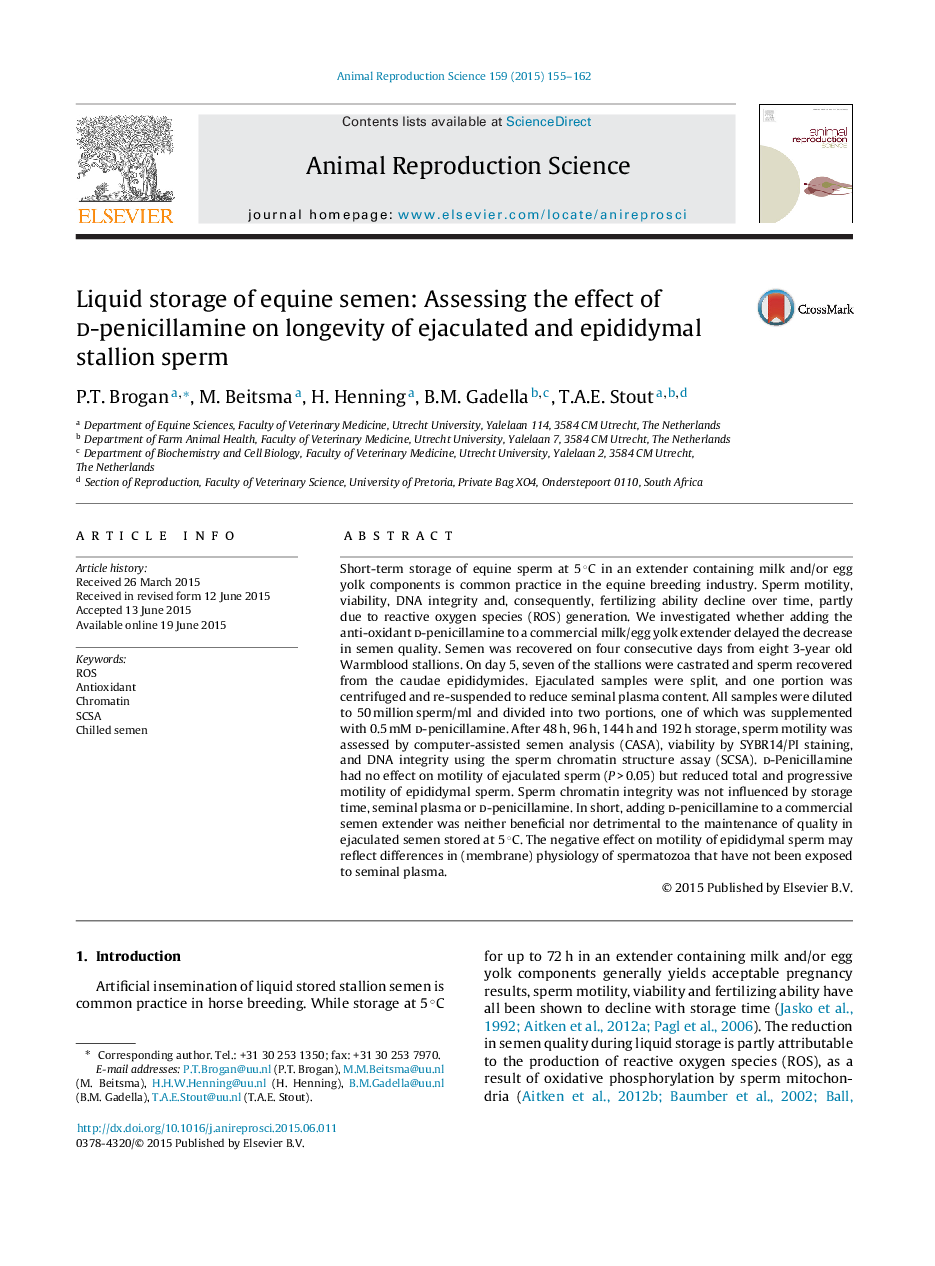| Article ID | Journal | Published Year | Pages | File Type |
|---|---|---|---|---|
| 2072645 | Animal Reproduction Science | 2015 | 8 Pages |
•We added d-penicillamine to semen diluted with a milk-based extender.•We compared the effect on d-penicillamine on both ejaculated and epididymal sperm.•d-Penicillamine had no effect on ejaculated sperm held at 5 °C.•d-Penicillamine had a negative effect on motility of epididymal sperm held at 5 °C.
Short-term storage of equine sperm at 5 °C in an extender containing milk and/or egg yolk components is common practice in the equine breeding industry. Sperm motility, viability, DNA integrity and, consequently, fertilizing ability decline over time, partly due to reactive oxygen species (ROS) generation. We investigated whether adding the anti-oxidant d-penicillamine to a commercial milk/egg yolk extender delayed the decrease in semen quality. Semen was recovered on four consecutive days from eight 3-year old Warmblood stallions. On day 5, seven of the stallions were castrated and sperm recovered from the caudae epididymides. Ejaculated samples were split, and one portion was centrifuged and re-suspended to reduce seminal plasma content. All samples were diluted to 50 million sperm/ml and divided into two portions, one of which was supplemented with 0.5 mM d-penicillamine. After 48 h, 96 h, 144 h and 192 h storage, sperm motility was assessed by computer-assisted semen analysis (CASA), viability by SYBR14/PI staining, and DNA integrity using the sperm chromatin structure assay (SCSA). d-Penicillamine had no effect on motility of ejaculated sperm (P > 0.05) but reduced total and progressive motility of epididymal sperm. Sperm chromatin integrity was not influenced by storage time, seminal plasma or d-penicillamine. In short, adding d-penicillamine to a commercial semen extender was neither beneficial nor detrimental to the maintenance of quality in ejaculated semen stored at 5 °C. The negative effect on motility of epididymal sperm may reflect differences in (membrane) physiology of spermatozoa that have not been exposed to seminal plasma.
